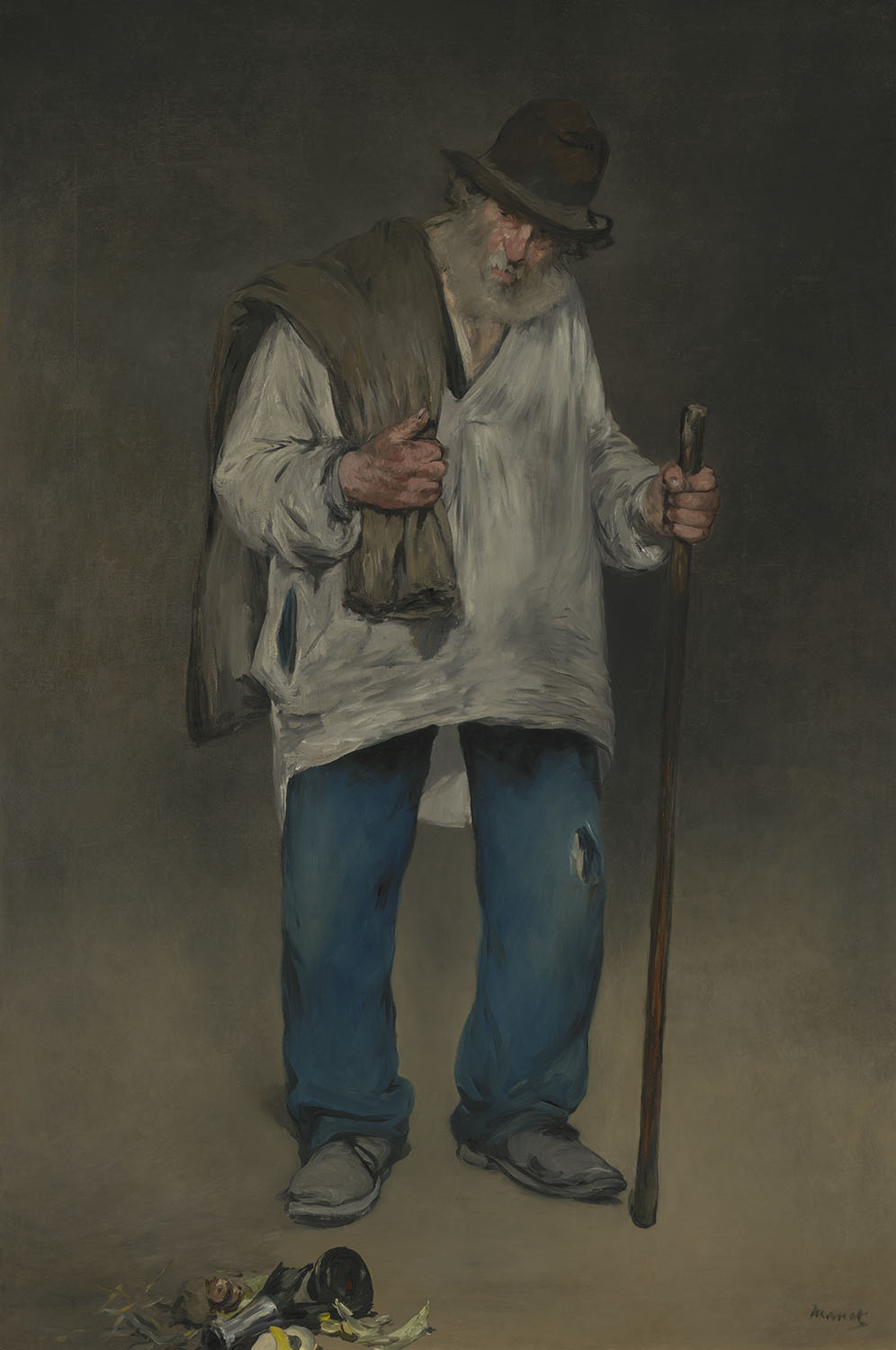The Ragpicker
c. 1865–1870
Édouard Manet (French, 1832–1883)
Oil on canvas
The Norton Simon Foundation
The Ragpicker represents one of the practitioners of a now-obsolete profession that involved sifting through the detritus of daily life—not only rags, which were sold to paper manufacturers—but also kitchen scraps, soap and other castoffs that were left out for trash collectors. Sorting garbage might sound like work for the truly destitute, but these scavengers were regulated, semiprofessional recyclers of city waste, and they were seen as a discrete social type, one that was free from the restrictions and inhibitions of a traditional bourgeois lifestyle.
Manet, who was experiencing his own sense of alienation and rejection from established art circles, may have identified with his embattled subject. Both artist and ragpicker could be seen as bohemians who operated on the margins and earned a living by making use of the stuff of everyday life. The small still-life element in the lower foreground of this painting, a pile of opened oyster shells, coupled with a broken champagne bottle and lemon peels, may symbolize this shared creative act.
Manet’s Philosophers from the Art Institute of Chicago
For the first time in 50 years, a special exhibition brought together three of Manet’s larger-than-life “Philosopher” paintings: Beggar with Oysters (Philosopher) and Beggar with a Duffle Coat (Philosopher) from the Art Institute of Chicago, and the Museum’s own The Ragpicker. Created in the late 1860s, these paintings were Manet’s take on a pictorial type developed by the great 17th-century Spanish artist Diego Velázquez. On the occasion of this historic reunion in 2021–22, Chief Curator Emily Talbot moderated a conversation about these fascinating paintings with the Art Institute of Chicago’s Gloria Groom, Chair of European Painting and Sculpture, and Kim Muir, Research Conservator for Paintings in the Department of Conservation and Science.
